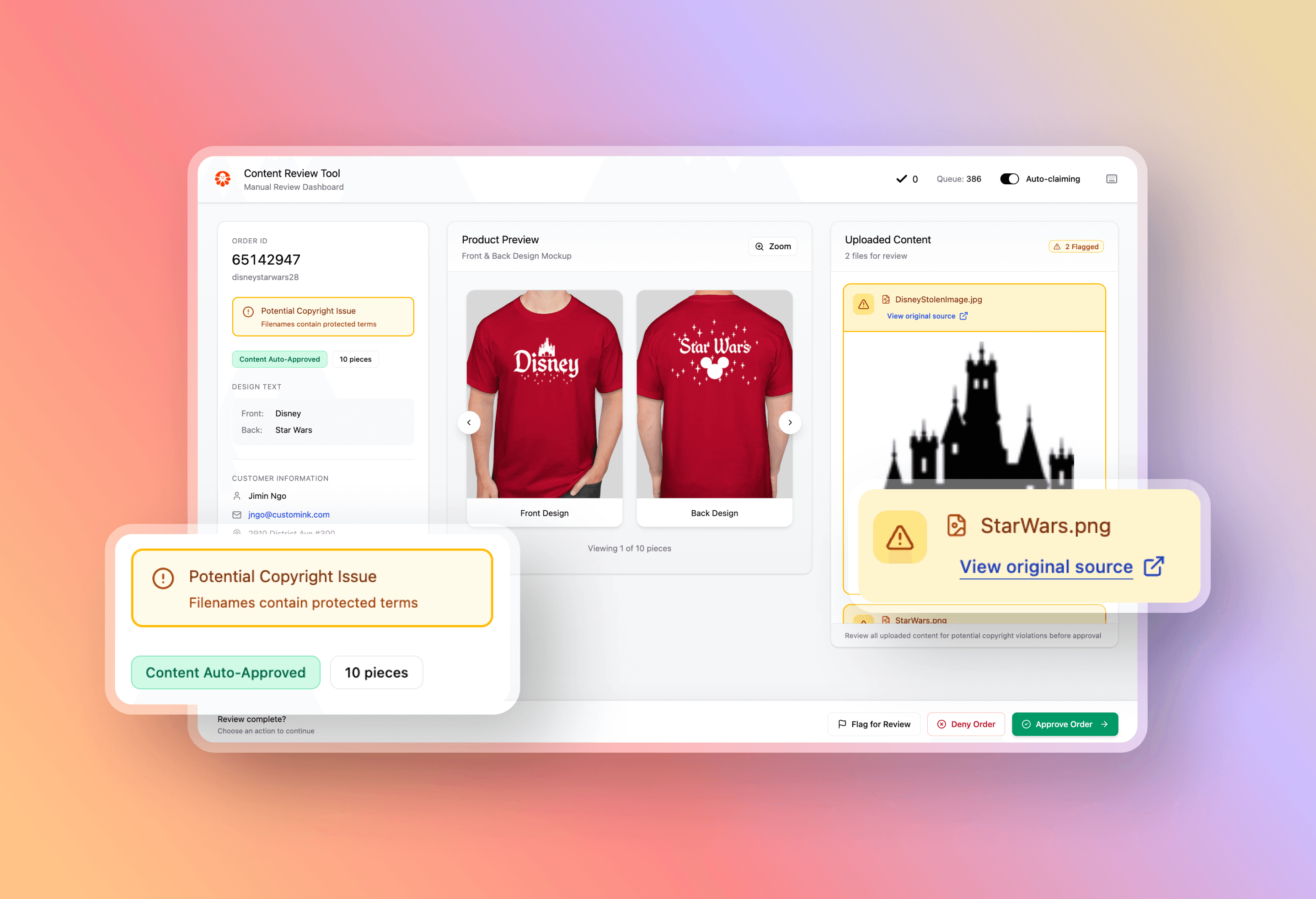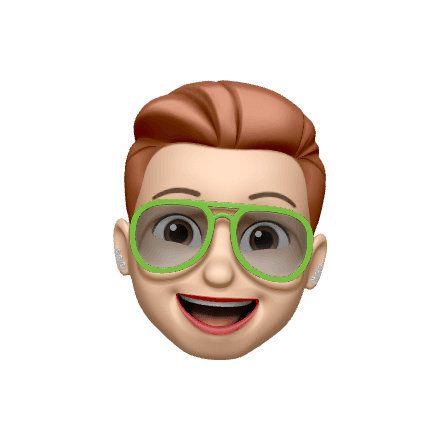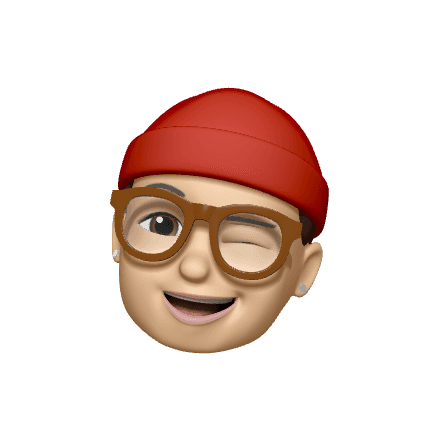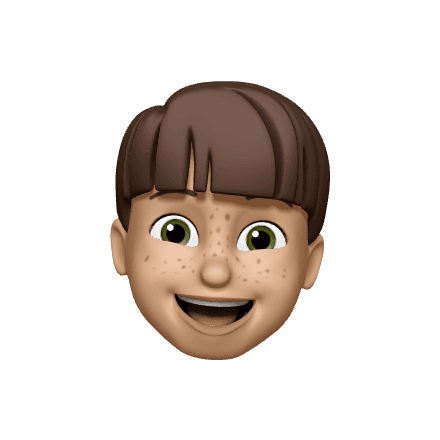Custom Ink Design Lab allows users to add any text and upload any images for print.
In order to utilize the content review tool for more order types and eventually automate the entire review workflow, the tool needed a complete overhaul. After shadowing users to identify their pain points and tedious tasks impeding their workflow, I needed to redesign the tool to achieve quick review.
User Goals
Any team member (Inker) should be able to use this tool without much training (in just a day)
Team members should be staying within the tool as much as possible without relying on other tools such as the ones for our existing sales teams
Team members should be able to make a decision on order content as quickly and easily as possible by showing all relevant information up front
Business Goals
65 orders an hour
90% accuracy in content review
Successfully saved 2 Full Time Employees (FTE)
No proper context clues
Limited functionality
Team members weren't able to make quick and easy decisions
1) Zoom Functionality
Reps were manually zooming into the screen or squinting. When selecting Google Lens image search, upload showed up large and zoomed in which is helpful but this should happen in the tool itself.
2) Ability to Leave Concise Notes
For next rep that gets the order if an upload/text is denied, investigative notes will ensure the next rep isn’t doing double the work.
3) Updated Training Expectations
Taking way too much time to look into orders for issues, need to update expectations on these “deep dives”. Reps are also checking different legacy tools to confirm previous/linked/sister orders (they should not need to be previously trained in operations roles).
4) Relevant Button Text - Uploads
The generic button text not being the file name (Image #1) is slowing down the content review process. Team members typically find context clues in file name if it’s stolen/screenshotted. Also unable to differentiate between clip art and uploads.
5) Queue Visibility
Not being able to see how many orders are in the queue slows team members down since they have to check in with manager on whether it’s a glitch vs. actual no claim (clicking “Claim Next” repeatedly).
6) Ability to See Both Proofs
Without clicking back and forth arrows would save clicks and make review quicker.
1) Clear Customer Information
Users could quickly see the customer name, email, and address to quickly investigate whether the images or text were stolen.
2) One Click Address Search
No more copying and pasting, the address link would pull up a Google search to see if it's a business (good context clue) or random residence.
3) Clearly Outlined Text and Uploads
No more guessing if something in the preview image is customer inputted text/upload vs. our design lab clipart.
4) Clearly Labeled File Names
Uploads now showed the actual file name to help the user figure out if the image was stolen (ie. "Screenshotted" or "DisneyStolen.png").
5) Claiming Toggle
A claiming toggle was created to speed up the order process even more. Once the order was approved, denied, or canceled, a new order was automatically claimed.
6) Proof View
Being able to see both proofs (front design and back) saved users for additional clicks. The arrows only appeared if there were right and left sleeves.
7) Zoom Functionality (See Below)
Being able to hover zoom over the proof, and *bonus*, engineers added the ability to scroll zoom even further into the image for tiny items!
8) Notes Requirement (See Below)
Previously, if an order was denied or canceled, the sales rep talking to the customer had no idea why it wasn't approved. Having notes required saves the next rep from doing double the investigative work.
Hover Zoom Functionality
Users can now hover over the image previews and see an enlarged view of the design details.
Required Notes
The context provided in these required notes saves the next rep from doing duplicative work.




















